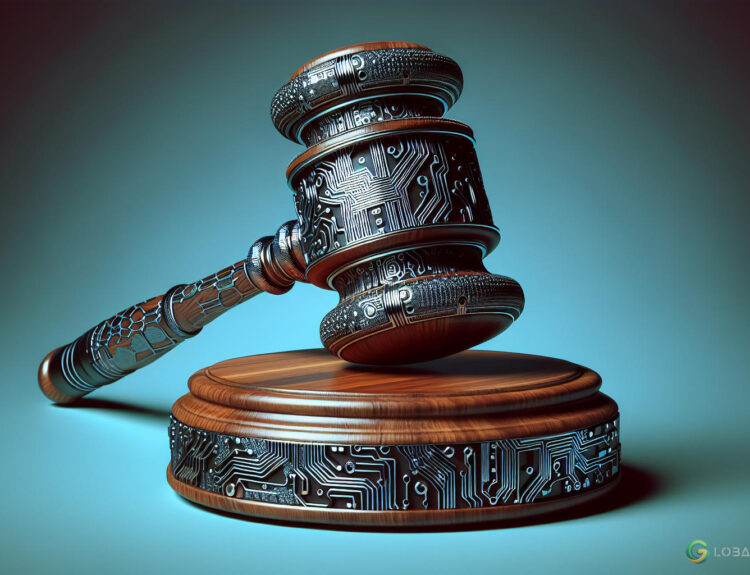Disclosure: The views and opinions expressed here belong solely to the author and do not represent the views and opinions of crypto.news’ editorial.
AI and Blockchain: The Future of Secure Payments
Over $200 billion is expected to flow into the global AI industry by 2025, significantly more than the current GDP of smaller nations like El Salvador. However, the outcomes—products, services, and profits—have yet to justify the capital inflow and frenzy. At this point, AI companies would need about $600 billion to profitably pay back investors.
AI Needs a ‘Killer App’
Combining AI with blockchain and cryptocurrency for secure, seamless, and user-centric payments could be the use case that redeems AI. For instance, Amazon One’s palm recognition feature has already shown promising results. AI combined with blockchain can address issues like centralization, bias in training data, and lack of transparency, offering a holistic improvement.
These goals are achievable today as the blockchain-crypto stack has become substantially more performant and user-friendly. AI models are also expected to reach human-level intelligence by 2027.
Digital Payment Trends
About 96% of US adults shop or pay online at least once a year, according to Forrester’s ‘The State Of The US Consumer and Payments’ report for 2024. Younger adults, who use more than four connected devices on average, show higher digital payment adoption rates and are comfortable with emerging transaction channels like voice assistants and chatbots.
Retail merchants should prioritize offering a rich and seamless payment experience over the range of available payment methods. Younger consumers are open to trying new methods, but they do not compromise on the experience.
Enhancing Payment Systems with AI
AI—both predictive and generative—can help payment service providers and merchants efficiently serve new-age consumers. For example, Microsoft’s Co-Pilot for Finance can be integrated with finance apps, allowing users to ‘converse’ with their financial data. These AI-powered tools help users make more informed payment and spending choices.
Retail merchants and online platforms can use AI to offer personalized payment options and timely discounts, boosting sales. AI also significantly enhances the security of payment systems with advanced machine learning and natural language processing, enabling efficient anomaly detection and real-time fraud prevention. AI also adds extra security layers, such as biometric verification.
AI in Financial Security
Leading financial institutions like HSBC and PayPal already use AI-based systems to combat money laundering and other payment-related crimes. As technology evolves, over 61% of companies worldwide are excited about using AI to streamline and secure their payment systems.
The Need for Decentralized AI
Developing and training AI models require substantial resources. For instance, OpenAI spent over $100 million to train GPT-4, making it nearly impossible for mid-small companies to compete. As development costs rise, more potential builders will be priced out, leading to increased centralization in the industry. Two-thirds of all funds raised by emerging AI projects have gone to Big Tech companies.
Web3-native payment infrastructure is necessary to offset the potential negative impact of increased institutional adoption and participation. More AI means more data creation, often containing sensitive information, managed on hyper-centralized servers, posing security, privacy, and end-user autonomy threats.
Web3-oriented entrepreneurs and venture capitalists are pushing for decentralized AI solutions. The sector attracted over $207 million in funding in less than 96 hours in early July.
As a globally distributed, transparent, and tamper-proof database technology, blockchain complements AI systems perfectly. Decentralized payment rails can benefit from AI’s ability to ensure a seamless and interoperable user experience, although certain aspects currently block the mass adoption of web3-native payment rails.
AI in payments is a $55 billion opportunity by 2031, with blockchain and cryptocurrency critical to achieving this reality. The combination allows merchants and service providers to offer a rich payment user experience along with a broad set of payment methods, including fiat and crypto.
“If the AI industry is serious about finding the ‘killer app’ for sustained, long-term adoption, it must embrace the decentralized payments paradigm. Solutions to persistent problems co-exist with the scope for futuristic innovation. It’s the obvious way forward.”
About Peko Wan
Peko Wan is the co-CEO of Pundi X. She has over 15 years of experience in the IT industry. Before joining Pundi X, she worked for Opera Software and Ogilvy & Mather. Pundi X has been deploying a blockchain-based point-of-sale solution and solidifying partnerships with governments, payment companies, and retailers. They were selected as one of the top 50 Innovative Fintech Startups in 2018 by KPMG and H2 Ventures, cool vendors in the blockchain business by Gartner, and one of the top 10 Fintech leaders by the Singapore Fintech Association in 2019.
#DigitalCurrency #PeerToPeer
























